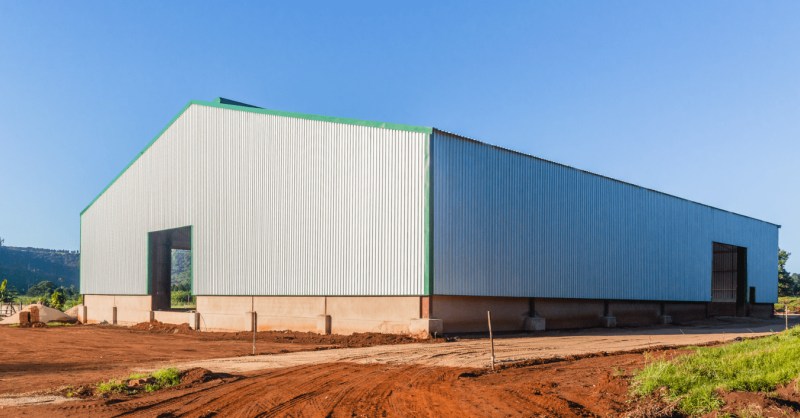A Complete Guide to Steel Structures Advantages and Applications

Steel structures are ubiquitous in modern architecture,from urban skyscrapers to vast industrial plants.Steel is often the core support material.
With the rise of prefabricated construction and sustainable design,steel structures are becoming the preferred option in the global construction industry.
Whether you're planning to build a new factory,invest in a commercial building,or are planning a project,this article will provide a comprehensive understanding of steel structures,from their definition and types to their costs and maintenance,helping you make more informed decisions.

The Importance of Steel Structures in Modern Construction
Steel structures,thanks to their high strength,rapid construction,and environmental friendliness,have become an irreplaceable core material in modern engineering.
According to Statista's 2024 Global Market Report,the steel structure market has reached$140 billion and is expected to exceed$220 billion by 2030.
Industrial plants and warehouses account for the largest share,approximately 38%,followed by commercial buildings,at 28%.
This means that for both large-scale enterprises and individual projects,steel structures are constantly changing the game in the construction industry.
What is a steel structure?
A steel structure uses steel as the primary load-bearing component,connected by welding,bolts,or rivets to form a stable,load-bearing building framework.
Common steel components include steel beams,steel columns,steel plates,and trusses.
Compared to traditional concrete structures,steel structures are lightweight and strong,capable of bearing greater loads while reducing foundation stress and overall construction costs.
This is why many factories,logistics parks,and stadiums choose steel structures.
Four Common Types of Steel Structures
Different types of steel structures are suitable for different scenarios and needs.Understanding these types of structures will help you make the most appropriate choice during project planning.Below is an analysis of four common types of steel structures.
1.Simple Structures
This type of structure typically consists of basic beams and columns,boasting a simple design and fast construction.It is the most basic form of steel structure.It is particularly suitable for projects with limited budgets or tight deadlines,as it can be erected quickly and meets basic requirements.
Common applications include small warehouses,carports,and residential extensions.
2.Rigid Frame Structures
Rigid frame structures tightly connect beams and columns through rigidly connected nodes,providing strong overall stability and the ability to withstand large horizontal loads.This structure is often used in projects requiring large spans.It eliminates the need for internal columns,allowing for a more spacious interior and improving space utilization.It is ideal for large buildings requiring flexible layouts.
Common Applications:Commercial buildings,stadiums,hangars,etc.
3.Truss Structures
Truss structures distribute stress through a combination of triangular elements.This design ensures high strength while reducing overall weight.Its light weight and high load-bearing capacity significantly reduce material consumption and transportation costs,making it an economical and efficient structural form ideal for projects requiring large spans or unusual shapes.
Common Applications:Large bridges,stadium roofs,transmission towers,etc.
4.Arch Structures
Arch structures create a natural load-bearing system through their curved design,offering excellent compressive resistance and the ability to withstand large horizontal loads.This structure not only excels in functionality but also possesses high aesthetic value,making it often used in projects requiring a high level of architectural aesthetics.
Common applications:Large warehouses,tunnels,temporary exhibition halls,etc.
Steel vs.Concrete vs.Wood:Which is Right for You?
Many users hesitate between steel,concrete,and wood when choosing building materials.
The following comparison table will help you quickly understand the differences between the three.
| Characteristic | Steel Structure | Concrete Structure | Wood Structure |
|---|---|---|---|
| Initial Cost | Medium to high | Medium | Low |
| Construction Speed | Fast, can be prefabricated | Slow, requires on-site pouring | Moderate |
| Seismic Performance | Excellent, high ductility | Average | Poor |
| Maintenance Needs | Low, only requires anti-corrosion maintenance | Moderate | High, easily affected by pests |
| Environmental Friendliness | 100% recyclable | Partially recyclable | Renewable, but low durability |
Conclusion:
If you are looking for fast construction,long life,and high load-bearing capacity,steel is the best choice.
If the budget is limited and the project is small,wood or concrete can also be alternatives.
Uses and Practical Examples of Steel Structures
Steel structures have a wide range of applications.The following are some common areas and typical cases:
Industrial Plants and Warehouses
Structural Requirements:Large spans and column-free designs facilitate the operation of machinery and logistics.
Case Study:A 5,000 square meter manufacturing plant reduced its construction period by 40%through steel structure design.
Commercial Buildings
Such as shopping malls and office buildings,steel structures allow for more flexible layouts and exterior designs.
For example,a shopping mall in New York City uses a steel frame design,allowing for flexible interior design.
Bridges and Infrastructure
Truss steel structures can be used in large bridges,such as the Golden Gate Bridge in San Francisco.
High-Rise Buildings
Skyscrapers,such as the Burj Khalifa in Dubai,often use steel as their core framework.
Maintenance and Life Extension of Steel Structures
Steel structures can typically last for over 50 years,but only if they are properly maintained.
Practical Maintenance Tips:
1.Anti-Corrosion Treatment:Regularly inspect the anti-corrosion coating or galvanizing on the steel surface.
2.Drainage Design:Ensure proper drainage from the roof and foundation to prevent water accumulation and corrosion.Fire Prevention Measures:Use high-performance fire-reta.rdant coatings to improve fire resistance.
3.Annual Inspection:Perform structural safety inspections at least once a year to prevent fatigue damage.
Through effective maintenance,the lifespan of steel structures can be extended by 10-15 years,saving long-term maintenance costs.
FAQs about Steel Structures
Q1:What is the cost per square meter of steel structure construction?
The cost of steel structure construction varies depending on the region,design complexity,and steel grade.For industrial plants,it's approximately$40-80,for commercial buildings,$80-120,and for bridges or other large structures,it's over$150 per square meter.
Q2:How long can a steel structure last?
With proper maintenance,steel structures can last approximately 50-70 years,making them a relatively durable material.
Q3:How can steel structures be prevented from rusting?
To effectively prevent rust on a structure,corrosion prevention measures such as galvanizing,anti-corrosion coatings,and good drainage design are necessary.
Q4:Are steel structures suitable for coastal or high-humidity areas?
Suitable,but if used in coastal areas or high-humidity environments,you'll need to choose steel with a high corrosion resistance grade and increase maintenance frequency.
Q5:How much faster is steel structure construction than concrete?
Steel structure is also considered prefabricated,and its construction time can be 30-50%shorter than concrete.
Conclusion
Steel structure has become an indispensable part of modern architecture due to its advantages such as high strength,environmental recyclability,and efficient construction.
From industrial plants to commercial complexes to high-rise skyscrapers,steel structures provide reliable,economical,and sustainable solutions.
If you're planning a new project,now is the perfect time to learn about and adopt steel structures.
Choosing an experienced supplier that meets international standards will help you reduce costs,improve quality,and ensure your building project performs well for decades to come.





